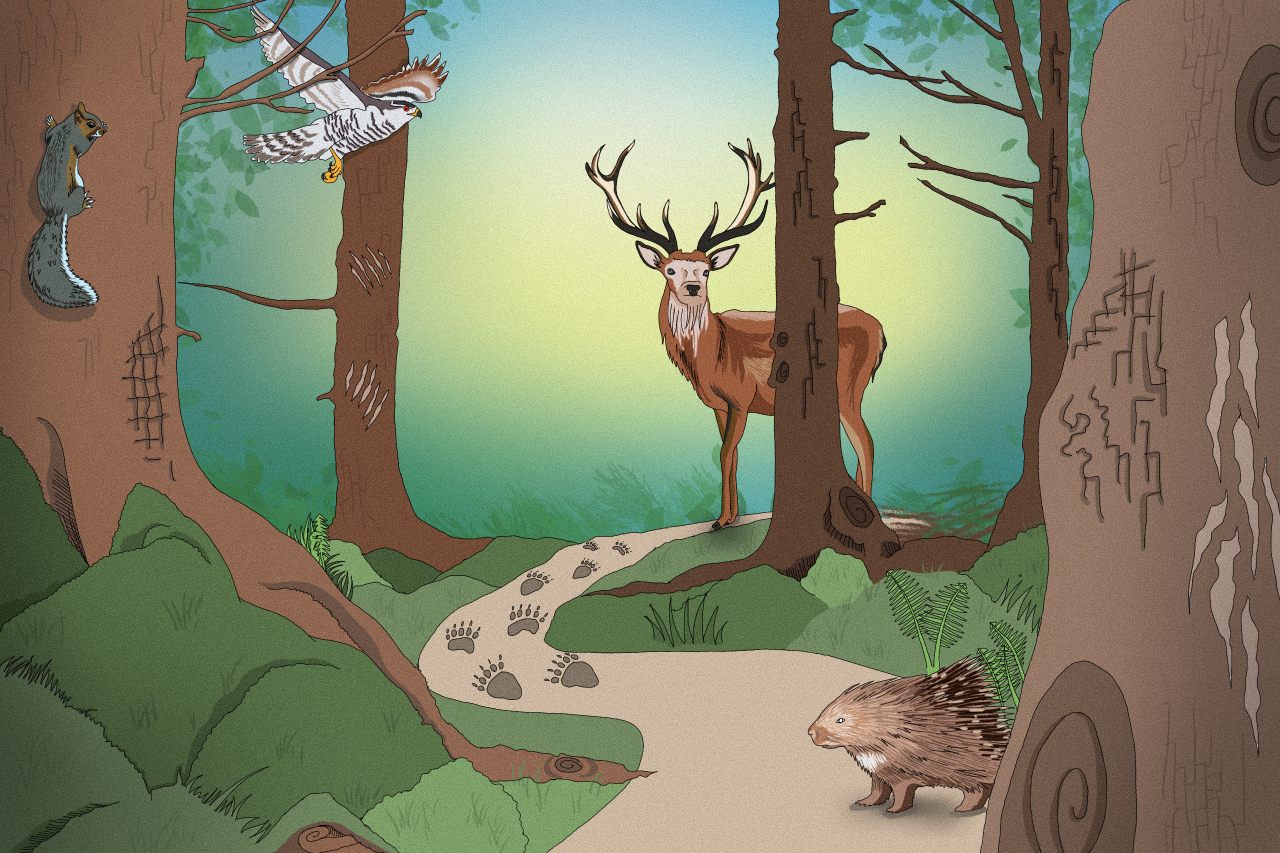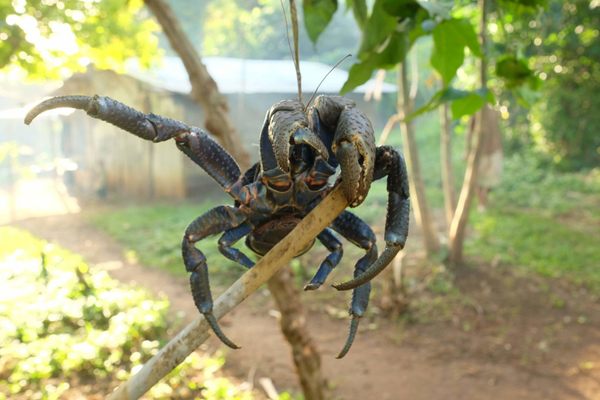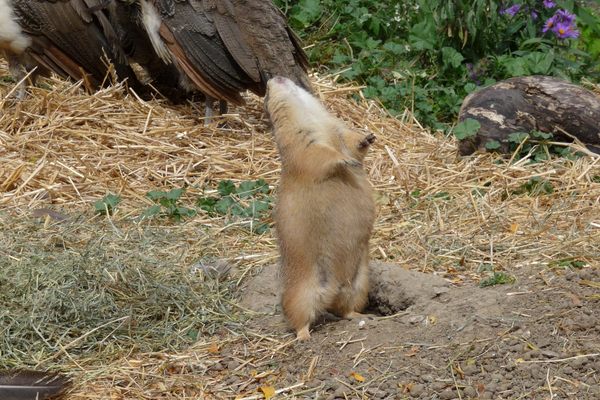How to Read Wildlife Tracks and Signs
Spotting the clues left behind by animals is a free and fun way to connect with nature.
Happening upon a foraging deer or dam-building beaver can turn an ordinary walk in the woods into your own personal safari. But you don’t have to wait for a chance encounter to get up close and personal with wildlife. Finding clues left behind by animals was an essential skill for ancient humans and remains a free and fun way to connect with nature today.
“All of a sudden the world begins to open up,” says Casey McFarland, a field ecologist who trains biologists, guides, and the general public to read wildlife tracks and signs. “A quiet patch of woods is suddenly brimming with the evidence of all kinds of animals doing all kinds of things.”
To get started, McFarland recommends a simple shift in attention. “Instead of deciding you’re going on a walk, decide that you’re going out to look for evidence of animals,” he says. Whether you’re heading into the backcountry or a city park, be sure to bring along a high-quality field guide and consider consulting with an expert, like a park ranger or even a certified tracker in your area.
According to McFarland, there are two categories to keep in mind for identifying the creatures in your neck of the woods: tracks and signs. Animal tracks are just that—paw, claw, and hoofprints—and signs “are all of the other evidence animals leave as they express themselves in the world,” McFarland says. That includes scat, beds, and even scratch marks on a tree trunk.

Tracks
Finding animal tracks is easiest in mud, snow, or sand, but broken branches and munched-upon leaves are also good clues that prints may be nearby. To figure out who left them, you’ll often need to collect just two clues: the number of toes and the presence of claw marks.
Canines, including wolves, dogs, and foxes, will leave four distinct toe prints with claw marks dotting them like i’s. Felines also have four toes, but since their claws are retractable, claw marks aren’t usually present. Many other mammals—squirrels, skunks, raccoons, and bears—have five toes, just like humans. Since claw marks don’t always register, McFarland recommends reviewing the foot shape of different animals, something a good guide can help with.
Hoofed animals such as deer and elk have two pointy toes that leave distinct impressions behind; while birds have four toes, the rear-facing first toe may not make contact with the ground, so look for three long, skinny, forward-facing toes, with talons at the tip.
A small ruler can help identify your track maker more precisely. If you’ve found paw prints that have four toes and claws, for example, size can tell you whether they were made by a wolf, which will leave prints that are about two inches wider than those of a Labrador or similarly sized dog. “Context is very important, too,” says McFarland. “Are you in a backcountry area with just wolves, or both wolves and dogs? Are there domestic sheep around, in which case there may be large sheepdogs?”
After you’ve gotten good at identifying tracks, McFarland suggests a new challenge: following them as a far as you can.
Scat
The size and shape of most scat will tell you who left it. For instance, a big patty usually came from the backend of a cow or buffalo, while long, tubular feces with tapered ends are the work of a canine, such as a coyote or fox. Bobcats and mountain lions leave segmented poos, and deer, elk, and moose drop piles of pellets as they saunter. Bird droppings are usually white, thanks to the high levels of uric acid they contain.
Sometimes, the contents of the scat can help you identify its maker. Bear and racoon poop is generally studded with berries, while owls, kestrels, and other birds of prey leave scat that’s full of fur, feathers, and bones.

Beds
Wildlife leaves behind signs even when they’re sleeping. According to McFarland, one of the easiest animal beds to find is that of a deer. “Once you start looking, you’ll see them everywhere.” Does (like all ruminants) doze in roughly 30-minute intervals, leaving a flattened patch of vegetation in their wake. To find them, look for circular depressions with matted vegetation and white fur mixed in. If you’re in an area with larger ungulates—moose or elk—the size of the bed will tell you who it belonged to.
Most birds nest high in the forest, but attentive trackers can also find avian homes on the ground. Waterfowl, including ducks, build stick nests on the banks of ponds and creeks. Other birds don’t even exert that much effort. Pelicans and geese construct scrape nests; look for shallow depressions just deep enough for eggs.
Other animals get their z’s underground. Wood mice, groundhogs, and prairie dogs build burrows with openings that are easy to spot from the surface. During breeding season, foxes sometimes repurpose those holes for their own kit-rearing purposes.
Black bears typically spend their winters in the hollow of a large tree, or a den they’ve excavated under a stump. Outside of hibernation, bears often create makeshift mattresses for napping by shredding tree bark and arranging it in a pile. If you see a mound of recent shavings, you might be hanging near a bear’s lair!
Scratches
Sometimes bears leave claw marks on trees for other reasons, such as marking territory or communicating dominance. But it’s not just bears; lots of animals leave their mark on tree bark. Porcupines etch while beavers whittle. If you happen upon a tree trunk that looks like it’s been sanded down haphazardly, that was the work of male deer, either rubbing the itchy velvet off its new antlers or depositing its scent as a kind of a dating profile.
McFarland says gray squirrels also tear away patches of tree bark “to express themselves.” One squirrel will chew away a patch of bark, rub its scent on it and then another will do the same—chewing away a little more, and rubbing their cheeks on it. “That’s how they learn about other squirrels in the area,” McFarland says. “It’s basically a community bulletin board.”





























Follow us on Twitter to get the latest on the world's hidden wonders.
Like us on Facebook to get the latest on the world's hidden wonders.
Follow us on Twitter Like us on Facebook